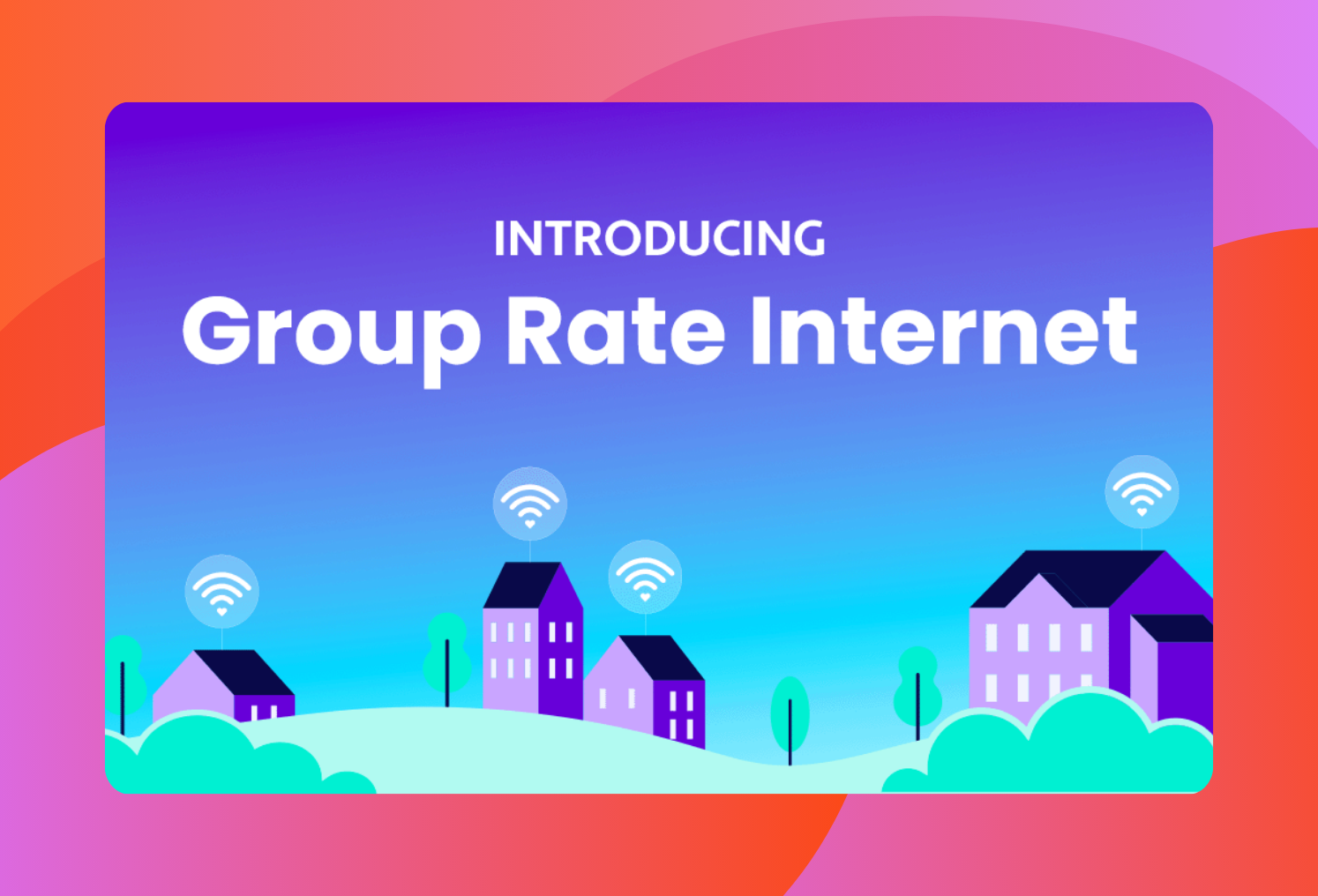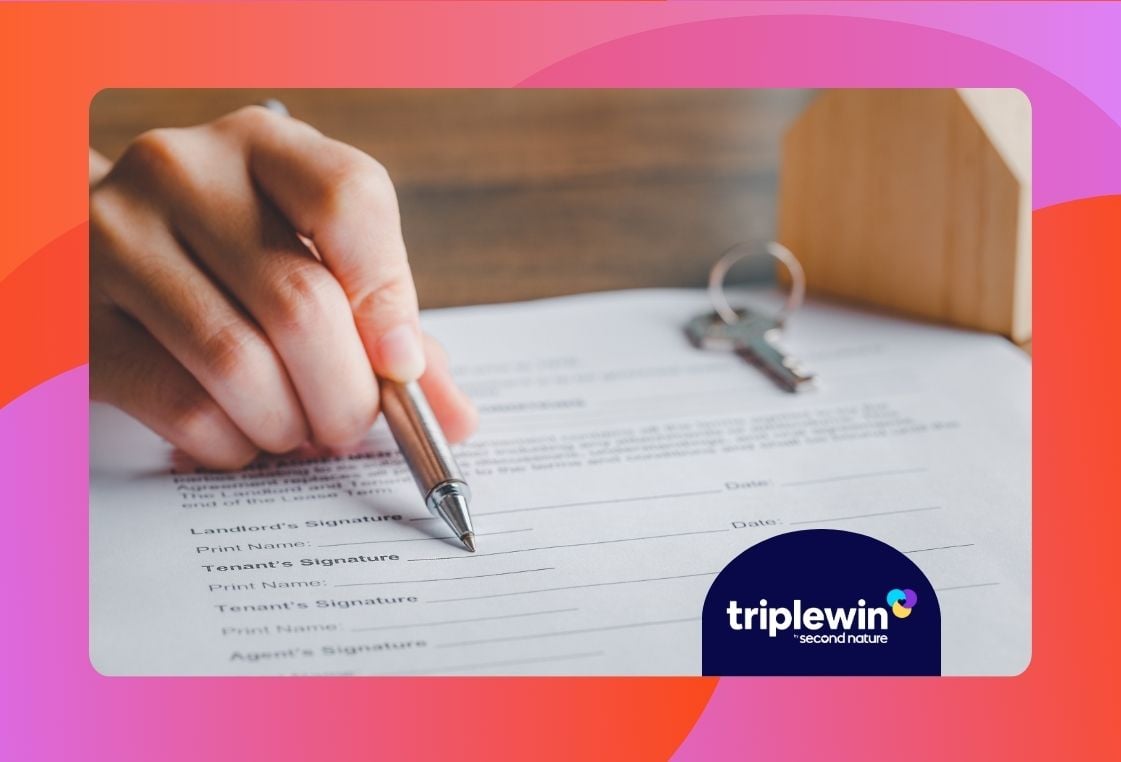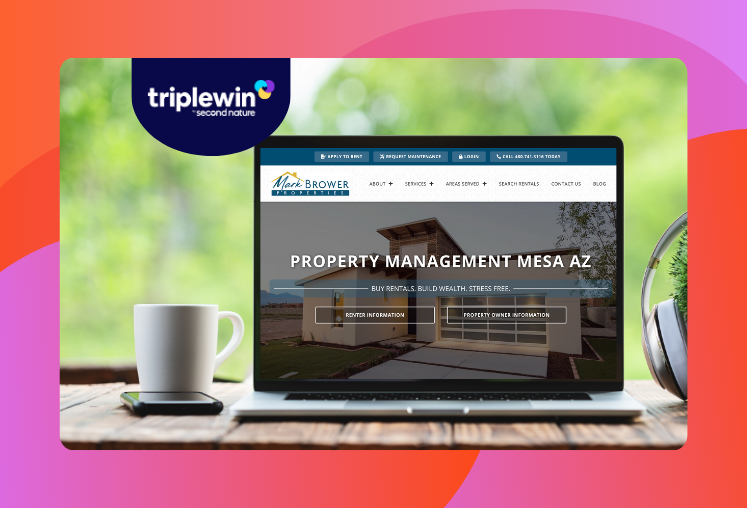What is Tenant Retention and 16 Ways to Improve it
What is tenant retention? Tenant retention refers to the ability of property owners or managers to keep their current tenants renewing their leases rather than having them move out and needing to find new renters. In the world of property management, retaining tenants is often more cost-effective and efficient than constantly finding new ones. This practice not only ensures a steady cash flow of rental income but also reduces expenses associated with vacancies, marketing, and new tenant screenings. To maximize tenant retention, you need a combination of value-driven services, proactive management, and strong tenant relationships. In this guide, we'll delve into 15 top tenant retention strategies. Second Nature's Outlook: "Tenant turnover” is an industry term used from time to time. But we here at Second Nature are trying to evolve the word "tenant." We’ve seen the incredible work property managers do day in and day out to make renters feel like they’re so much more than just a tenant – they’re residents. Making renters feel like residents isn’t just philosophical, it also encourages them to invest in care for their home and add value to the property. This is why, at Second Nature, we prefer to call renters “residents.” Like you, we think of them as people first – making your property their home. 1. Offer a Resident Benefits Package It’s one of the biggest trends in property management for a reason! Offering a Resident Benefits Package (RBP) is a strategic move to elevate the overall resident experience. And nothing is more critical to tenant retention than their experience. An RBP typically bundles various services and amenities that cater to the modern tenant's needs and desires. This can range from convenience-driven offers like an air filter delivery service or move-in concierge to value-driven aspects like resident credit building and renters insurance programs. By incorporating such a package, property managers not only enhance the perceived value of living in their property but also position themselves as being attuned to the evolving demands of today's renters. That’s what makes an RBP such a significant differentiator in the competitive renter’s market, making tenants more likely to renew their leases and stay longer. 2. Address maintenance requests promptly When it comes to rental experience, property maintenance is a top priority – and, unfortunately, often a top pain point. One of the chief concerns for tenants is how swiftly and efficiently their maintenance requests are addressed. Quick and effective responses to these requests demonstrate a property manager's commitment to the well-being and satisfaction of their tenants. Delays or negligence can lead to a feeling of being undervalued or overlooked, pushing renters to look for alternative accommodations where their concerns might be treated with greater urgency. Moreover, swift repairs prevent minor issues from escalating into major, costlier problems. In essence, by prioritizing and promptly attending to maintenance requests, property managers not only ensure the structural integrity and safety of their property but also build trust and rapport with their tenants, encouraging longer stays. 3. Incorporate a Renter’s Insurance Program Offering or even mandating a renter's insurance program is a proactive measure that benefits both property managers and tenants. This insurance covers tenants' personal belongings in cases of theft, fire, or other unexpected events, granting them peace of mind. For property managers and owners, it offers an extra layer of protection, as tenants are less likely to pursue claims against the property for personal loss. Additionally, when damages or accidents occur that aren't the property owner's responsibility, having an insurance policy ensures that costs are covered without disputes. For owners, it protects their property and protects them from financial losses. They can also often get lower premiums on their own insurance if they can prove their renters are covered with their own policies. Second Nature addresses this benefit by offering a renter’s insurance program as part of our RBP. 4. Focus on security In today's evolving risk landscape – with digital threats, increasing weather risks, etc. – ensuring tenant safety should be a paramount concern for property managers. In turn, tenants are more likely to stay in a property where they feel safe and secure. By installing high-quality security systems, surveillance cameras, weather safety plans, or generators, and by regularly updating and maintaining these systems, property managers can provide an environment where residents feel their well-being is prioritized. It's not just about the physical infrastructure either. Identity theft has surpassed home burglary in the level of threat to renters. At Second Nature, we provide $1 million identity protection as part of our RBP. That ensures that residents feel safe – and that their financial stability is protected. That, of course, protects their ability to pay rent. A steadfast commitment to safety fosters trust and is a clear indication to tenants that their welfare is taken seriously, thus making them more inclined to renew their leases. 5. Offer incentives We all like a nice incentive now and then! Incentives play a pivotal role in tenant retention, acting as a value proposition that goes beyond just the living space itself. For example: By incorporating a credit reporting program, property managers can incentivize on-time rent payments, helping tenants build a positive credit history in the process. This not only promotes financial responsibility but also offers a tangible benefit to the tenant. Lease renewal incentives, such as discounted rent for the first month of renewal or free amenity usage, further encourage tenants to stay longer. Incentives create win-win solutions where tenants feel they're receiving added value while the property manager and owners benefit through consistent occupancy. 6. Offer Group Rate Internet The vast majority of renters today already pay for internet access in their homes. It's one of the most highly adopted services among renters, and for many of them it's an absolute necessity. With Group Rate Internet, you can integrate internet service directly into your leases. Residents no longer have to try to coordinate their internet contract with their lease term, and they can wave goodbye to hidden setup, cancellation, and equipment fees. Plus, thanks to negotiated rates, you can offer gigabit-speed service at a lower price than residents could get elsewhere. It's a clear win-win, and it's just one more benefit that will keep residents happy and increase their likelihood of renewing their lease. 7. Implement a rewards system Building a robust tenant relationship goes beyond addressing their needs; it also involves rewarding their loyalty. Programs in other industries maximize this type of value – think of Starbucks Rewards or Delta SkyMiles. A Resident Rewards program is similarly a strategic approach to foster customer satisfaction and long-term loyalty. Unlike direct incentives, these rewards programs offer points or credits for consistent on-time payments, renewing leases, or even care for the property. Over time, these points can be redeemed for tangible benefits or perks like gift cards, discounts on amenities, or special privileges within the property. By providing a continuous system of recognition, property managers can cultivate a positive tenant culture, making residents feel appreciated and thereby more inclined to renew their leases. Such a system also nudges tenants to adopt behaviors beneficial to both them and the property management, leading to a harmonious rental ecosystem. 8. Conduct regular inspections Regular inspections are a cornerstone of proactive property management and are essential for maintaining tenant satisfaction. By periodically assessing the condition of a rental property, managers can identify and rectify potential issues before they escalate. Whether it's a minor leak or wear and tear, addressing them early on reduces long-term maintenance costs and demonstrates a commitment to providing tenants with a well-maintained living space. Furthermore, these inspections offer an opportunity for open communication with tenants, understanding their concerns, and building trust. While it's crucial to respect a tenant's privacy by giving proper notice and scheduling at convenient times, these inspections emphasize the property manager's dedication to preserving the property's value and ensuring resident comfort. 9. Update and renovate In the competitive world of rental real estate, properties that remain stagnant quickly lose appeal. By making periodic updates and renovations, property managers can significantly enhance the rental's desirability and rental rates and keep it aligned with current housing trends. Whether it's a modern kitchen makeover, a bathroom upgrade, or simply a fresh coat of paint, these changes can breathe new life into a space. Not only do renovations increase property value, but they also communicate to tenants that their living experience is valued and considered. Tenants are more likely to renew their leases when they see active efforts being made to improve their living environment, ensuring they always feel they're getting the best value for their money. 10. Offer On-Demand Pest Control One of the fastest ways to sour a tenant's experience? Leaving them to deal with unwanted pests. It also might put you or the owner at risk of legal action, depending on the state. Whether it's ants in the summer or mice in the winter, pest issues can quickly escalate if not addressed immediately. By offering property management pest control as part of the tenant package, property managers demonstrate a proactive approach to potential issues and ensure that tenants feel their well-being is a top priority. This service minimizes the likelihood of recurring pest problems and showcases a commitment to maintaining a clean and habitable environment. It’s also a better ROI than preventive sprays that don’t necessarily address real issues. On-demand services ensure that actual issues are addressed as soon as they pop up (or crawl out!). Tenants will appreciate the quick response and effort to ensure their comfort, further solidifying their decision to stay long-term. 11. Include valuable services like Filter Delivery Property managers know that it’s often the small touches that leave a lasting impression – and nip bigger problems in the bud. One such valuable service is offering filter delivery. Regularly changing air filters not only ensures a healthier living environment by improving air quality but also boosts the efficiency of heating and cooling systems, saving significantly on energy bills. In fact, a study by the National Rental Home Council (NRHC) found that filter delivery could reduce costs by up to nearly 80%. By offering filter delivery, property managers remove a common chore from the tenant's list, demonstrating attention to detail and a commitment to their comfort. This proactive approach to maintenance, coupled with the convenience of direct-to-door delivery, can enhance the overall resident experience, making them more inclined to extend their lease. 12. Offer a Move-in Concierge The moving process can be one of the most stressful experiences for new tenants, filled with a myriad of tasks and uncertainties. In fact, most renters have already made their decision to renew or not within the first 30-60 days. By offering a Move-In Concierge service, property managers can significantly ease this transition. This service assists new residents with tasks like utility setups, mail forwarding, local service recommendations, and even scheduling movers or rental equipment. Beyond just the practical help, a Move-In Concierge communicates to the tenant that their comfort and smooth transition are a priority. This initial positive experience can set the tone for the entire duration of the lease, making tenants feel valued and well cared for from the outset. Related: How to Write a Tenant Welcome Letter + Free Template 13. Use digital solutions It’s just the reality of 2023 and beyond: Tenants expect digital convenience. Whether it's online rent payments, a tenant portal for logging maintenance requests, or virtual property tours, embracing digital solutions can greatly enhance the tenant experience. These platforms not only streamline administrative tasks, reducing the possibility of human error but also provide a more responsive and efficient service to residents. For younger generations especially, the ability to manage their tenancy online can be a significant deciding factor in choosing a rental property. Property managers who keep pace with technological advancements in the industry not only improve tenant retention but also position their properties as modern and forward-thinking. 14. Vet tenants thoroughly The process of tenant retention begins even before a lease is signed. By thoroughly vetting potential tenants, property managers can ensure they're selecting responsible individuals who are more likely to be great tenants – tenants who will respect the property, adhere to lease terms, and foster a positive community environment. This involves conducting comprehensive background checks, verifying employment and income, and checking references from previous landlords. By choosing good tenants who have a track record of timely payments and good behavior, you set the stage for a longer, more harmonious rental relationship. It's an investment in time upfront that can save countless hours and resources in the long run. 15. Seek feedback and act on it Among the best tenant retention tips: Tenant feedback is an invaluable tool for understanding what you're doing right and where there might be room for improvement. Actively seeking out tenant opinions through surveys, feedback forms, or simply open-door policies can shed light on aspects of property management that might otherwise go unnoticed. Of course, collecting feedback isn't enough on its own; the crucial step is to genuinely act upon the insights gathered. Whether it's a minor repair, upgrades, or better communication methods, implementing changes based on tenant feedback not only improves the living experience but also shows residents that their voices matter, fostering trust and encouraging longer tenancies. 16. Foster a strong property manager-tenant relationship The foundation of tenant retention often rests on the relationship built between the property manager and the tenant. This bond goes beyond mere transactions and lease renewals. It's about understanding, respect, and open communication. By being approachable, responsive, and genuinely caring about tenants' well-being and comfort, property managers can foster a sense of community and belonging. Regular check-ins, prompt responses to concerns, birthday or anniversary gifts, and occasional gestures of appreciation can make tenants feel valued. A strong relationship not only reduces the chances of tenants seeking a new place but also encourages positive word-of-mouth recommendations, benefiting the property's reputation and bottom line. Tips for successful tenant retention program At the heart of tenant retention is a simple yet profound realization: tenants, much like any consumers, are looking for value, ease, and assurance in their choices. When it comes to exploring the topic of tenant retention meaning, for us, it’s all about the resident experience. The key question for tenant retention is simply: “How do we create an experience so good that residents never want to leave?” Answering this question helps property managers identify exactly what residents are willing to pay for and stay for. Here are a few tips for approaching the resident experience. Get a much more in-depth look at it through our 2023 State of Resident Experience Report. Focus on convenience: Today's residents value convenience more than ever. Be it quick maintenance solutions, easy-to-access amenities, or streamlined communication, the easier you make life for your tenants, the more likely they are to stay. A resident benefits package or on-demand services are ways to weave in this convenience. Embrace digital transformation: The digital age has transformed tenant expectations. Online rent payments, digital lease signings, AI-powered helpdesks, and smart home integrations are just a few avenues where digitalization can significantly enhance the resident experience. Aim for the Triple Win: True success in tenant retention is realized when all parties involved – the residents, property managers, and owners – feel they're gaining value. Implement strategies where each party stands to benefit, ensuring harmonious, long-lasting relationships. By grounding your tenant retention program in these principles, you not only meet resident expectations but often surpass them. How Second Nature helps with tenant retention Navigating the world of tenant retention can be intricate, but Second Nature simplifies the journey. Our comprehensive Resident Benefits Package (RBP) is meticulously designed to cater to modern tenant needs, offering unparalleled convenience and value. By focusing on strategies that drive resident satisfaction, Second Nature ensures both property managers and owners achieve higher tenant retention rates. Embrace the RBP, and witness the transformative impact it brings to your property management endeavors.
 March 7, 2025
March 7, 2025
Read more

March 19, 2025


















